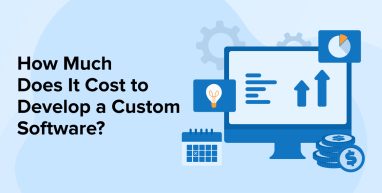
Software development cost refers to the total expenses incurred during the entire software development process, from requirement analysis to deployment and maintenance. The clients share their software development project requirements and ask the software development company about the development cost estimate. In some cases, clients specify their budget, and then a custom software development company gives a detailed cost estimate to the client based on their budget. However, many clients don’t have an idea of the software development cost. Therefore, after knowing the cost figures, they either drop their idea of developing custom software or reduce their project functionalities and requirements to stay within the budget. This shows how important it is to have an understanding of the custom software development cost.
This blog post will explore all the facets of software development costs. You will learn the components determining the cost of software development, a strategy to calculate the development cost, tips to expedite the cost estimation and reduce development time, and the various software development payment models.
1. Types of Software Development Cost
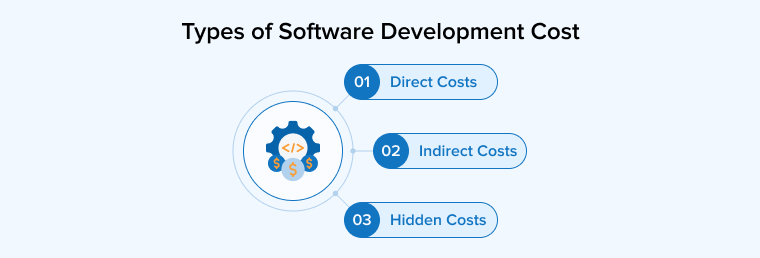
We’ll now understand the software development cost breakdown into three categories to get into the depth of calculating the software development cost:
1.1 Direct Costs
As the name suggests, direct costs are directly related to the software development process.
- Software Development Team Hiring Cost: The sizes of the development teams are generally based on the project scope and complexity. Many companies outsource software development services to an offshore company to leverage the low-cost hiring advantage of the preferred locations. The hierarchy level of software developers in the team also influences the overall project costs. Therefore, it is important to consider the project requirements and decide on the team size, required expertise, and outsourcing possibilities.
- Hardware and Software Cost: What kind of external integrations do you need in your project? What will be the best technology stack? What about software testing? Automation test frameworks are required, or manual testing will suffice? What are the hosting requirements? Is it necessary to go for cloud-based hosting? What kind of code editors and networking devices does the project demand? These are some of the aspects in this category you should consider while estimating custom software development costs. The parameters vary from project to project.
- Licensing Fees: Licensing in software development refers to the legal agreement between the software developer and the client company. Licensing fees guarantee that end users are using the most up-to-date and authorized software version. It is a consistent revenue source for software development companies. Initially, you may find licensed software costly, but it gives you a competitive advantage in the long run.
- Training Costs: The aim behind software development in any sector is to improve operational efficiency. So, what’s the benefit of spending on a software development project when the target users cannot operate it? Investing in software without providing adequate training can lead to decreased productivity or even make the work more difficult for employees. To prevent such issues, an organization must provide sufficient training programs to the users regarding software operation. Software experts conduct training sessions and workshops to help users understand the associated technicalities of the software.
1.2 Indirect Costs
Indirect costs are not directly linked to coding or development but contribute significantly to the software project’s success. The following costs are major forms of indirect costs:
- Project Management: Every task requires strong management to ensure timely completion without compromising the quality. Glitches in project management can lead to financial losses, damage to market reputation, and client trust erosion. Mismanagement will cause future budget shortages, leading to reduced predetermined software functionalities or improper security implementations.
- Quality Assurance and Testing: You need to ensure that the development goes in the right direction to avoid future repercussions. Therefore, QA and testing must go along with coding. This will detect bugs and other unexpected scenarios early and resolve them at the correct time. It might seem quite time-consuming, but it’s necessary to prevent future rework and expenses in maintaining high-quality standards.
- Documentation: Many times, companies overlooked the documentation aspect of software creation, but it plays an important role. Software development documentation details every stage of the development cycle from requirement specifications to testing methods and maintenance tasks. It helps developers understand the logic behind every line of code written by other developers and start scaling the existing systems after understanding the context. Thus, it reduces a lot of time needed to grasp the system’s context and supports smoother collaboration among developers.
1.3 Hidden Costs
These expenses are normally not given attention during the budget preparation. This results in out-of-budget expenditure post-deployment. To avoid this, it is important to consider the following hidden costs in software development.
- Integration: Integration with third-party systems or application programming interfaces can impact the average cost of software. It is based on pre-built or custom integrations, the total number of systems that need to be integrated, and unidirectional and bidirectional data syncing.
- Compliance Costs: You need to adhere to standard software development regulations, guidelines, and organizational policies such as the General Data Protection Regulation (GDPR) in European countries. Proper compliance audits through compliance officers must be conducted at regular intervals.
2. How to Estimate Software Development Cost?
The cost estimation process may vary from project to project, but the fundamental methodology will remain the same.
The following is the step-by-step procedure to calculate the software development costs accurately and prepare a realistic budget:
2.1 Thoroughly Analyze Requirements
Conducting a deep analysis will give you a clear understanding of the software type, size, and complexity, resulting in building a proper project scope. With these insights, you can further go ahead with your software development cost estimation process.
2.2 Develop the Project Scope
Define the project scope after analyzing and approving the requirements. The project scope outlines the phases, objectives, deliverables, timelines, features, assumptions, and risks associated with the project. You can use any tool to create a detailed project scope, such as a Work Breakdown Structure (WBS).
2.3 Contact Your Software Development Partner
After finalizing the project development scope, reach out to any reputed software development partner like TatvaSoft. Discuss every detail about your project requirements and scope of work.
The software development team will then discuss internally after knowing the project scope and define the software development cost. The following are the different techniques software development partners use to estimate the software development cost.
- Rough Estimation:
- Rough estimation is a software development cost estimate with approximate accuracy. This is just a rough assessment that is not bound by any contract or terms and conditions. It is subject to change and must be used for informational purposes only. Software vendors often give a rough estimate in two ways.
- When a project manager or a software consultant listens to your business objectives and project requirements, they get a rough idea about the essential features and scope of work. Based on previous project experience, they make a rough guess about development costs.
- Another way to derive a rough estimate is to assess a detailed feature list, business objectives, and possible development challenges. This gives a more precise picture of a software solution, with a better understanding of the development tasks.
- Detailed Estimation: In a software development project, a detailed cost estimate is the most precise and 100% accurate estimation. The analysts collaborate with the developers to prepare it. A detailed estimation includes a comprehensive description of the “software under development”, including its specifications and details about wireframes, documentation, quality, and compliance. It covers all the costs related to labor, integrations, infrastructure, overhead, testing, deployment, maintenance, and support.
2.4 Get the Estimate
After reviewing the project requirements, the analysts offer an approximation for your software development costs. It wouldn’t be accurate, but enough to give you a rough idea to compare against your budget or cost expectations. Clients receive a software development proposal with a detailed and accurate estimate after the planning phase.
3. Factors Affecting Software Development Cost
A thorough analysis of these influencing factors will enable you to prepare an accurate software development cost estimation.
So, without wasting much time, let’s comprehend the prominent factors a software development team must consider:
3.1 Project Complexity and Size
The size or complexity of custom software refers to the features and functionalities. The number of screens or pages in your application affects its total cost. We can classify the project into four types based on its size and complexity:
- Small-size: These are web or mobile apps with minimal features. It’s a cost-effective solution for startups or small businesses with budget constraints. Freelancers or a small development team can develop software of such kind.
- Medium-size: The complexity of the custom software increases due to third-party integrations, backend development with databases and APIs, and a more sophisticated user interface. A dedicated team of software developers is generally required to manage these tasks.
- Large-size: Large-size software implements cloud computing, microservices architecture, or containerization for handling increased workloads and thousands of users at a time. Multiple development teams with specialized developers are required.
- Enterprise Level: Enterprise-level applications are highly scalable and extensive, with high-security standards requiring continuous development and maintenance.
3.2 Technology Stack
The technologies you are choosing for software development highly impact its development expenses. Complex projects require cloud computing services, third-party integrations, APIs, frameworks, and different libraries. Making a wrong decision at this step increases the probability of future rework and migration to the correct platform, resulting in huge operational expenses. The use of new-world technologies like AI and blockchain requires expert professionals, increasing the hiring cost. The initial investment figures become high due to intense resource requirements.
3.3 Software Type
“What type of software do you want?”. This is the starting point of the software development cost estimation. Every particular type is associated with its configuration requirements, development timeline, skill set necessities of software developers, and other factors that influence the cost. So here are some common types of software:
- New Software Development: A completely new software developed from scratch according to the client’s requirements. Such software demands intensive resources, as every stage is a fresh stage.
- Software Modernization or Modification: Software developers are responsible for the necessary modifications and upgrades of an already deployed software according to modern technology. The complexity of the required changes is the cost-determining factor.
- Software Integration: Customizing existing software by integrating it with ready-made software modules and packages.
- Web Development: When clients demand a web application or a tailor-made website, the development cost varies according to design complexity and performance specifications.
3.4 UI/UX Design
The user interface is the visible part of your software application. If it’s interactive and user-friendly, the customer perception converts into high retention and conversion rates. If you use custom animations and responsive design elements in the application, users will be attracted to use it, increasing customer engagement, but the investment will be quite high. The designing phase of software development involves prototyping, wireframe creation, usability testing, and iterating the process according to the received feedback.
The development effort and time are enhanced if you make the design accessible to differently abled users. The design complexity further rises when designing for different devices and screen sizes, requiring adaptive or responsive design strategies.
3.5 Size of the Software Development Team
Project managers in software development firms form development teams according to the size and complexity of the software project. Larger teams consisting of diverse specialists drive the development process, along with increasing the overall cost of software development.
- Small Team: A team of a project manager, a software developer, and a quality assurance tester is suitable for small projects with a precise project scope.
- Medium Team: For medium-sized projects, the team structure gets refined with the inclusion of software architects, UI/UX designers, and business analysts.
- Large Team: Projects implementing microservices architecture and cloud hosting require a team of various software developers, testers, and multiple domain experts.
- Enterprise Team: Enterprise software development requires specialized roles like DevOps engineers, solution architects, database administrators, and cloud engineers.
3.6 Hiring Model
Among others, the hiring model is a factor with a heavy impact on the invoice. With a wide range of engagement options, like outsourcing, freelancing, and in-house development, choose an appropriate method that fits your project requirements.
The in-house development model is suitable in cases where you need direct and complete control over your team. However, this hiring model lacks flexibility and takes months to find the right candidates.
Freelancing is a quick and easy fix, but it exposes your business to several risks. Meanwhile, outsourcing is an option that maintains the balance between tight team management and quick hiring.
3.7 Other Development Expenses
The following cost-affecting factors are often ignored during the initial phase of software development cost estimation:
- Maintenance and Support: Software release for end customers is not the end of the software development project. Seamless functioning of the custom software will require time-to-time updates, bug fixing, technical support, performance improvement, and other forms of maintenance
- Marketing: The custom software built for the target audience must reach them for the project’s success. Therefore, besides software development expenses, the company spends on paid advertisements, marketing campaigns on different platforms, search engine optimization (SEO), industry events, and other promotional activities.
4. Tips to Reduce Software Development Costs
Software development cost can be optimized by eliminating unnecessary expenses without affecting the software quality.
Refer to the tips and tricks to reduce software development costs and get a cost-effective solution.
4.1 Consider Using Open-Source Solutions
Software licenses become an additional expenditure if open-source alternatives are available. Go for open-source frameworks, libraries, and testing tools that offer dynamic functionalities and are equipped with active community support. This will help you direct your expenses to critical areas like implementing robust security mechanisms.
4.2 Minimum Viable Product (MVP)
MVP gives you a visualization of the product’s demonstration of its core functionality. It is a minimal version of your product with basic functionalities that help you comprehend customers’ perceptions of your product before its full-scale development. These valuable insights refine your app idea and give you a direction for proceeding in the right direction of software development. Understanding strengths and weaknesses before the actual development increases the chance of building a high-quality end product, enhancing your business growth, and market image.
4.3 Communication and Collaboration
Stakeholders must communicate their requirements to the project manager and developers. Because any kind of miscommunication can lead to increased costs down the road. Lack of clarity often results in the development of a faulty, low-quality, or useless feature. Correcting that mistake would be very expensive. Moreover, ineffective collaboration consistently causes delays in the project, driving the development costs through the roof.
4.4 Implement Agile Development Methodology
The Agile model has become the most popular software development model owing to its flexible and iterative nature. It eases the development process by dividing it into small sprints and increasing the project delivery speed. Risks are identified in the initial stages, avoiding expensive mitigation measures later on.
5. Payment Models for Software Development
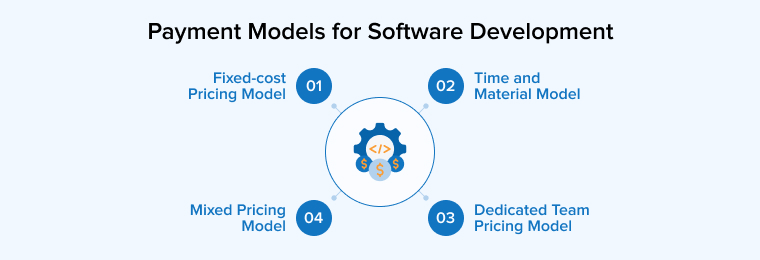
The client and the development company must coordinate and finalize the pricing model. The project roadmap must include the details of the agreed payment model for the smooth functioning of the business processes.
Let us discuss the prominent payment models for software development prevalent in the market:
5.1 Fixed-cost Pricing Model
Fixed-cost model is the traditional software development payment model. It’s named “fixed-cost” because it applies to business software projects with unchanging requirements and scope. The client here will know the exact software development cost and hence will decide on the budget accordingly. Such a model is suitable for small or mid-size projects with restricted budgets and strict timelines, with no possibility of requirement modifications.
5.2 Time and Material Model
As the name suggests, this model especially focuses on the time and resources aspect. Here, you’ll pay for the software development cost monthly, weekly, or at the decided intervals of periods instead of paying a lump sum amount at a time. The payment covers the labor and resources employed in the software development. This model is suitable for projects with unclear or evolving requirements. It gives the flexibility to hire experts when needed.
5.3 Dedicated Team Pricing Model
In this model, clients hire a dedicated team of engineers according to their requirements for a long-term engagement. This dedicated team will work only on one project till the project’s completion. The client company will decide regarding the management of the software development team. They have complete team management rights. The payment is done according to the team size, expertise of team members, and the service provider’s fees. It’s an expensive model suitable for large or enterprise-level projects requiring consistent collaboration and control.
5.4 Mixed Pricing Model
The mixed pricing model is also called the hybrid model. It is the combination of the fixed price model and the other model you desire (such as time and material or a dedicated team). This model benefits from the advantages of different models while decreasing the disadvantages of a particular model.
6. Final Thoughts
The above blog provides a wholesome idea of the various aspects involved in the software development cost calculation. With the evolving nature of software applications, the difficulty level has increased in determining the cost of software development. Therefore, it’s essential to gain correct knowledge from authenticated sources.


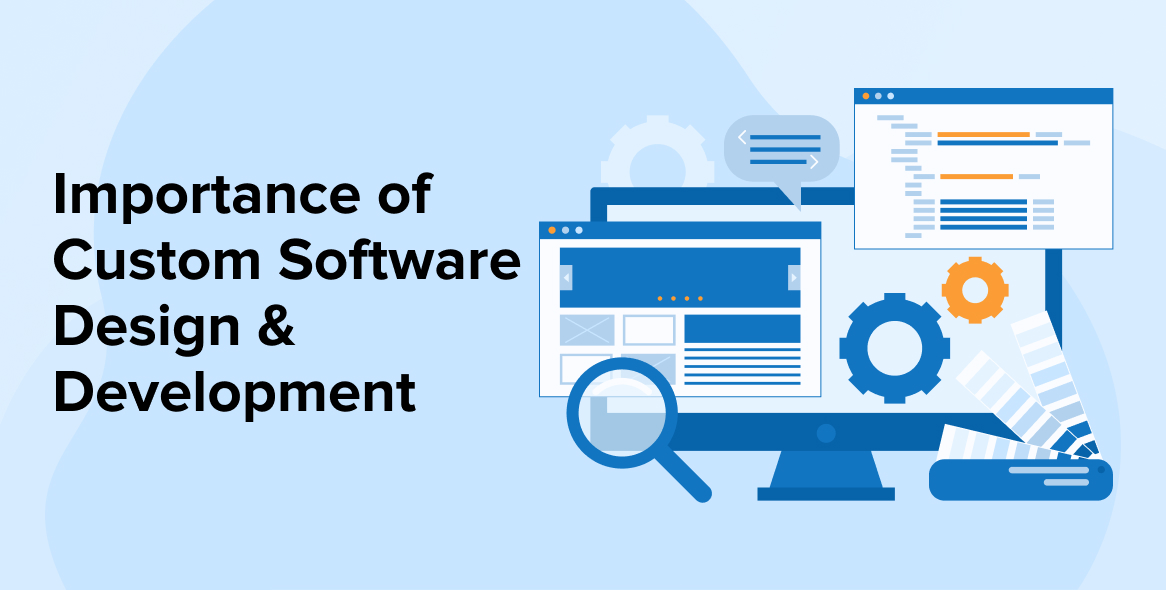
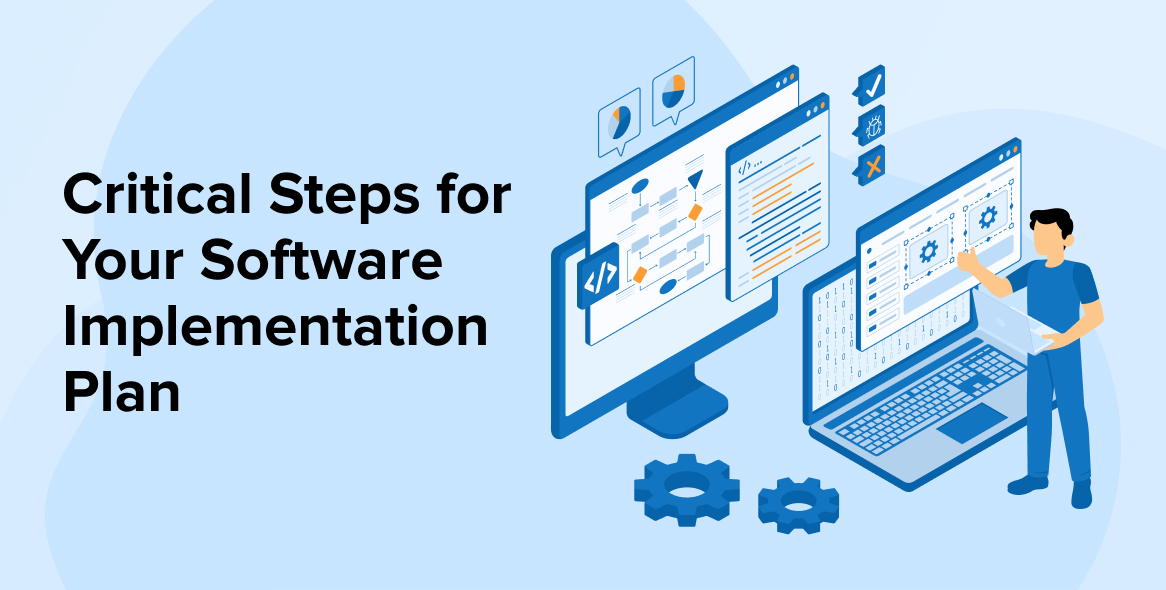
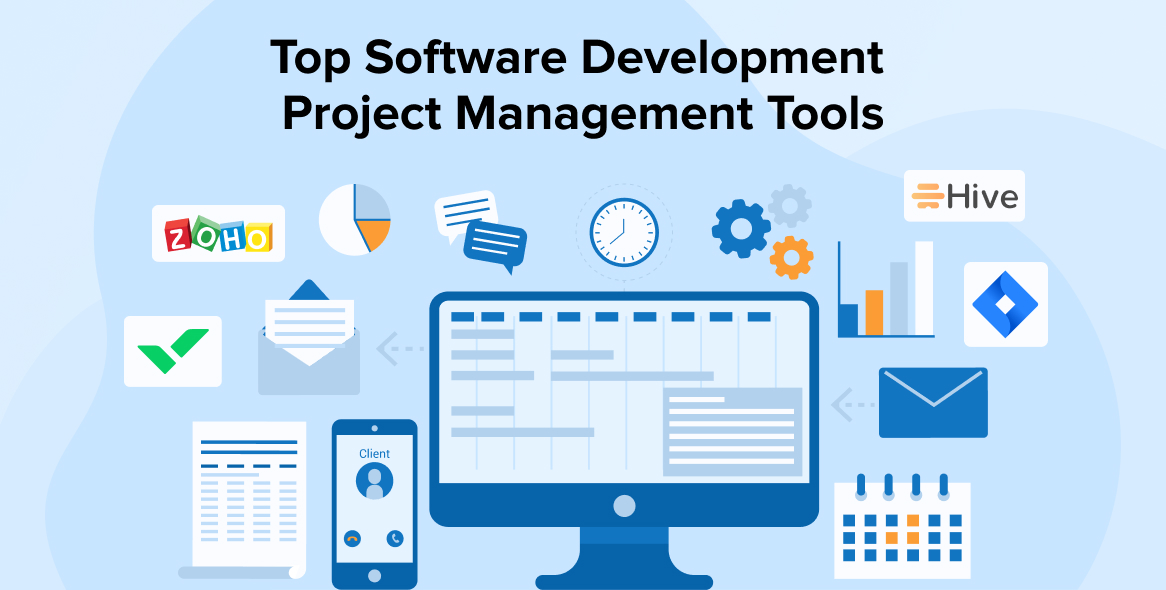

I think this article explained very well about custom software and different factors that affect the cost of software. But I think the size of software also plays a major role in the cost of any software product. There are some non-technical factors that could also affect the cost of an app or software.
As far as I know, geographical location may also impact the cost of developing software. Some regions like India and China where you can get software built for a much lower rate without compromising the quality as compared to the USA and UK.